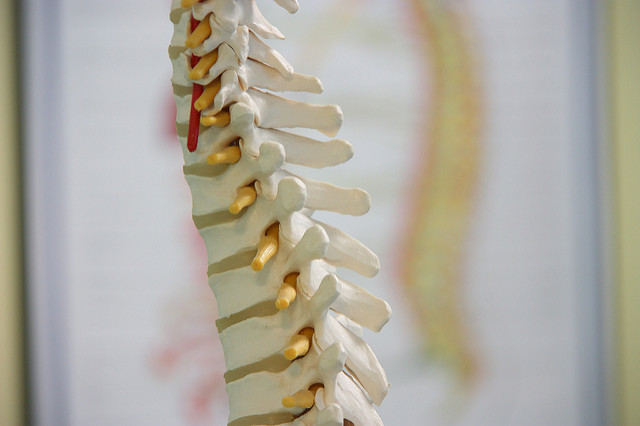1 Oct. 2020. A consortium of academic and industry labs is integrating electronic sensors and neural stimulation therapies into an early treatment protocol for spinal cord injuries. The five-year project involving universities, research institutes, and medical technology companies in the U.S., Canada, and Europe is funded by a $36 million contract from Defense Advanced Research Project Agency, or DARPA, part of the U.S. Department of Defense.
The consortium, led by biomedical engineering professor Karen Moxon at University of California in Davis, seeks to bring together advances in sensors and stimulation of nerve cells in the spinal cord into a single protocol that can be used with spinal cord injury patients soon after the injury occurs. The aim is to stabilize large fluctuations in blood flow and pressure in the days following the injury to make possible delivery of neural stem cells packaged in personalized 3-D printed scaffolds to the injury site, for regenerating nerve cell connections in the spinal cord.
“We will develop systems for real-time biomarker monitoring and intervention to stabilize and rebuild neural communications pathways between the brain and spinal cord,” says Moxon in a university statement. “As a result of our efforts, clinicians will be able to collect previously unavailable diagnostic information for automated or clinician-directed interventions.”
The project combines advances in neural sensors and nerve cell stimulation, with systems to record neural activity in the spinal cord and neural stem cell engineering. The researchers plan to employ a near-infrared sensor that measures blood flow and oxygen levels in the spinal cord, designed at University of British Columbia and developed by Pathonix Innovations Inc., both in Vancouver. A separate team from University of Calgary, Battelle Memorial Institute in Columbus, Ohio, and the nerve stimulation technology company Teliatry in Richardson, Texas will develop an implanted arterial pressure sensor to work with the blood flow and oxygen sensor.
Another team from École Polytechnique Fédérale de Lausanne or EPFL in Switzerland is contributing its system to stimulate the spinal cord and regulate blood pressure, which is being commercialized by the spin-off company GTX Medical in Lausanne and Eindhoven in the Netherlands. That system is expected to be integrated with neural stem cells and personalized scaffolds for nerve cell growth designed by a team from University of California in San Diego.
The Wyss Center for Bio and Neuroengineering in Geneva, Switzerland is contributing its Ability system that uses an implanted brain monitor to detect nerve cell signals in the brain and transmit the data wirelessly to an external device. The Wyss Center developed the Ability system for conditions such as spinal cord injury and stroke. The researchers expect to integrate the Ability device with the other components into a closed-loop spinal cord stimulation system to record signals and improve motor functions in the patient.
DARPA is funding the project through its Bridging the Gap Plus program that aims to dramatically improve treatment of spinal cord injuries, which occur with increasing frequency among service members as well as the public at large. Bridging the Gap Plus funds R&D on systems to reduce effects of the injury soon after it occurs, through real-time biomarker monitoring and stabilization. A second part of the program supports technologies that advance recovery of a patient’s functions during rehabilitation.
More from Science & Enterprise:
- Wearable Device Shown to Relieve Migraine Pain
- Brain Signal Synchronization Device in Development
- High-Capacity Brain Signal Reader Demonstrated
- NIH Funds Light-Aided Gene Therapy for Eye Disease
- A.I.-Aided Method Predicts Glaucoma Progression
* * *


 RSS - Posts
RSS - Posts
[…] Group Advancing Electronic Spinal Cord Injury Therapies […]